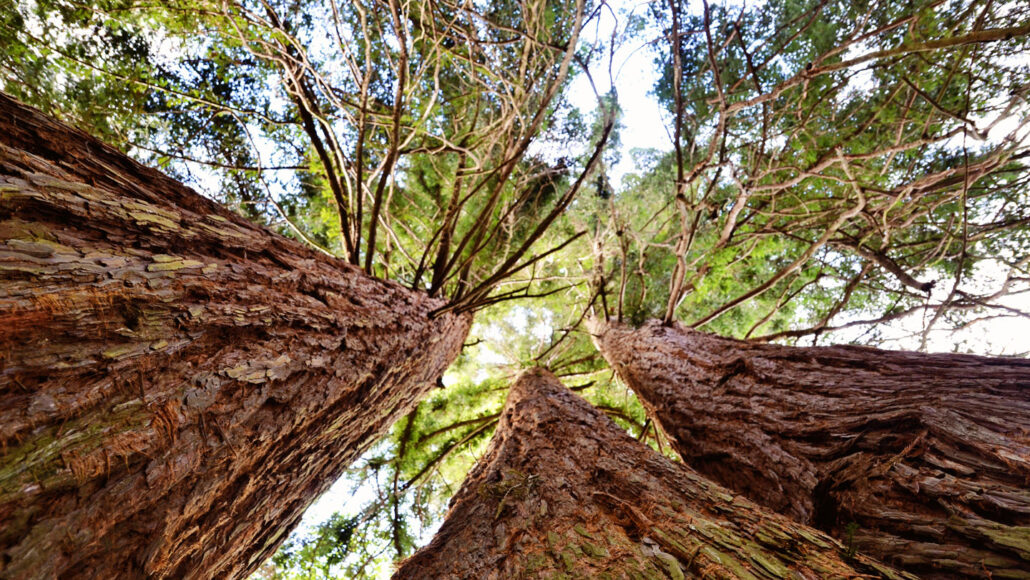Questions for ‘Some redwood leaves make food while others drink water’

A view from the forest floor into a redwood canopy. These trees are some of the tallest, oldest and most resilient on Earth.
Natalia Crespo/Moment/Getty Images Plus
To accompany ‘Some redwood leaves make food while others drink water’
SCIENCE
Before Reading:
- List three things that a tree needs to live. Specify where each thing might originate. (For example, a plant needs nutrients to live, which might come from the soil. You may use nutrients as one of your three things.) Finally, identify the plant structures that you think allow the plant to acquire each of the three.
- Why do you think plants have leaves? When a plant loses its leaves, what plant ability is affected? Imagine you are comparing the leaves of two different plant species. In what ways might the leaves differ? In what ways are the leaves likely to be the same? Come up with two possible differences and two probable similarities.
During Reading:
- Plant researchers discovered that redwood trees have two different types of leaves. Describe the role of each leaf type.
- How many leaves did Alana Chin and her team examine? What did the team learn by weighing the leaves before and after fogging?
- What name did Chin’s team give to the leaves growing close to the woody stem?
- What are stomata? What gas do stomata allow into the leaf? What gas do the stomata “exhale?” What name did Chin’s team give to the leaves with many stomata?
- According to the story, what is “shoot dimorphism?”
- How many gallons per hour does Chin’s team estimate a large redwood can drink through leaves alone? Through what other plant structures do redwoods absorb water?
- How did a redwood’s placement of its two specialized leaf-types differ in wet regions compared to dry regions?
After Reading:
- Sketch two redwood trees. Include leaves in your sketch. Draw the leaves using two different leaf shapes to symbolize the two leaf types. Add a legend to explain the symbolization. (These shapes do not need to actually resemble those on redwoods. For example, you could use triangles vs. circles.) One tree lives in a dry region — the other in a rainy one. How might the leaf-type distribution differ between these two trees? Refer to the article for answers. Illustrate this difference in your sketch. Now imagine the impact that climate change might have on these two trees. What leaf changes do you predict in these two trees if climate change leads to drier soils? Refer to the findings in this article to explain your answer.
- New scientific findings often generate further questions. After reading about this redwood study, come up with two new questions. Choose one of these questions. Based on what you’ve learned, what do you expect the answer might be? Come up with a hypothesis. Then design and explain a follow-up study that could confirm or reject that hypothesis.